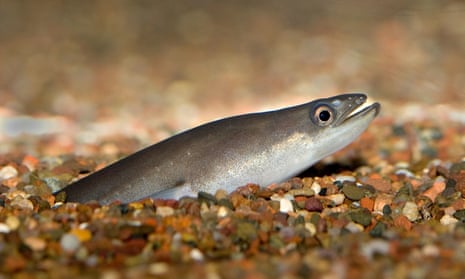A fluorescent pink slug and one of the world’s most expensive fish are among the species included in an update to the list of the world’s most threatened animals.
Mankind’s demand for the wood, stone and oil where the species live, as well as using them for food, is blamed for pushing many towards the brink of extinction, the International Union for the Conservation of Nature said in its authoritative Red List update.
The Pacific bluefin tuna (Thunnus orientalis), a meaty fish prized in Japan that was previously listed as a species of least concern, has seen numbers decline by up to a third over the past two decades leading it to be reclassified as vulnerable. The main threat to the species is its value as sashimi – one fish can fetch more than $100,000 (£64,000).
The appetite for sashimi is also blamed for the decline of the Chinese pufferfish (Takifugu chinensis), one of the world’s most toxic fish. It is now classified as critically endangered, the Red List’s most severe listing and the final step before extinction.
The American eel is upgraded to endangered status because of the decline of its Japanese counterpart, leading Asian markets to look elsewhere. The Anguilla rostrata can sell for as much as $2,200 per pound, and demand is such that a 2012 report said stocks were at “historically low levels”. The remaining eels are also threatened by poaching.
The updated list reveals that the world’s biggest earwig – the St Helena Giant Earwig (Labidura herculeana) measuring up to 80mm long compared to the European earwig’s 12-15mm – has become extinct. It used to live on a protected part of the island, but the stones that it lived under have been removed for use in construction. Mice and rats also contributed to its extinction.
Julia Marton-Lefèvre, the IUCN’s director general, said: “Each update of the IUCN Red List makes us realise that our planet is constantly losing its incredible diversity of life, largely due to our destructive actions to satisfy our growing appetite for resources.
“But we have scientific evidence that protected areas can play a central role in reversing this trend. Experts warn that threatened species poorly represented in protected areas are declining twice as fast as those which are well represented.”
In Australia, the Kaputar Pink Slug (Triboniophorus) lives solely on a mountaintop in New South Wales. It already lives at the highest levels of Mount Kaputar. Conservationists fear that it will have nowhere to go as climate change causes temperatures to rise.
Charopa lafargei, a Malaysian snail, was only identified by scientists this year, but is already listed at the highest threat level. It is named after Lafarge, the company that works the cement quarry near its limestone hill habitat.
Of the 76,199 species assessed in the Red List update, published at a conservation summit in Sydney, 22,413 are ranked as threatened to varying degrees.
Two amphibians are among the list’s few winners. Andinobates dorisswansonae and Andinobates tolimensis, frogs found only in the Colombian Andes, are both classified downwards in threat level because of protections brought in for the tract of forest where they live, which the IUCN described as well-protected.
